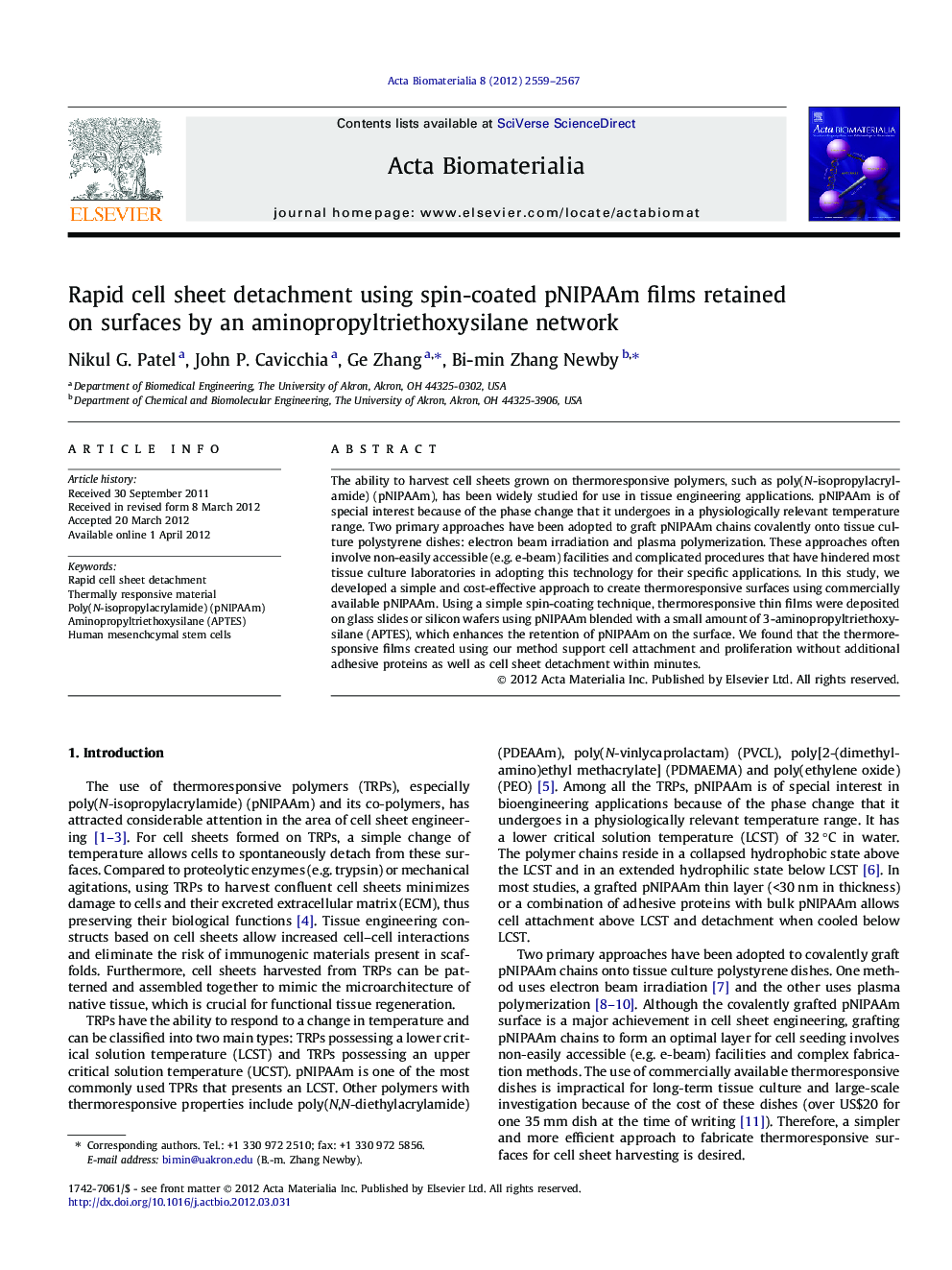| Article ID | Journal | Published Year | Pages | File Type |
|---|---|---|---|---|
| 10159663 | Acta Biomaterialia | 2012 | 9 Pages |
Abstract
The ability to harvest cell sheets grown on thermoresponsive polymers, such as poly(N-isopropylacrylamide) (pNIPAAm), has been widely studied for use in tissue engineering applications. pNIPAAm is of special interest because of the phase change that it undergoes in a physiologically relevant temperature range. Two primary approaches have been adopted to graft pNIPAAm chains covalently onto tissue culture polystyrene dishes: electron beam irradiation and plasma polymerization. These approaches often involve non-easily accessible (e.g. e-beam) facilities and complicated procedures that have hindered most tissue culture laboratories in adopting this technology for their specific applications. In this study, we developed a simple and cost-effective approach to create thermoresponsive surfaces using commercially available pNIPAAm. Using a simple spin-coating technique, thermoresponsive thin films were deposited on glass slides or silicon wafers using pNIPAAm blended with a small amount of 3-aminopropyltriethoxysilane (APTES), which enhances the retention of pNIPAAm on the surface. We found that the thermoresponsive films created using our method support cell attachment and proliferation without additional adhesive proteins as well as cell sheet detachment within minutes.
Related Topics
Physical Sciences and Engineering
Chemical Engineering
Bioengineering
Authors
Nikul G. Patel, John P. Cavicchia, Ge Zhang, Bi-min Zhang Newby,
